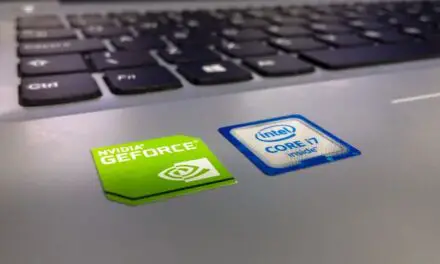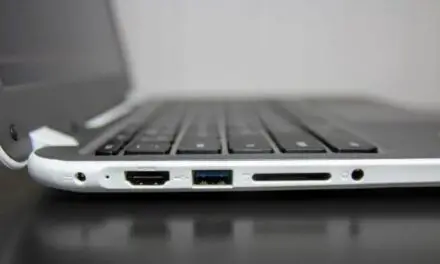Using your laptop outside, especially in summer, can do wonders for productivity and provide a refreshing break from being stuck indoors.
But we all know that heat is like kryptonite for a laptop, so having one sitting out in the blazing sun could start to cause problems.
Table of Contents
Do Laptops Overheat In The Sun?
Because of their compact design and limited space for cooling, laptops are prone to overheating in the sun. Anything exposed to direct sunshine will begin to heat up, possibly a lot, depending on the outside temperature and whether the color of the laptop absorbs or reflects the light.
You may have an issue with glare if your screen is under 500nits but outside temperatures in the short term shouldn’t be too much of a problem once it doesn’t go above 90 to 100 degrees Fahrenheit or 32 to 38 degrees Celcius for extended periods.
If it’s really hot outside and your laptop feels hot to the touch, then it’s time to try a few things to reduce that heat.
Keeping Your Laptop Cool In The Sun

If the fans are blaring and your laptop feels hot to the touch then it’s probably running hot.
If you’re unsure by touch and sound, you can also download some software to check if the internal components of your laptop are overheating.
Core Temp is a good application for keeping an eye on CPU Temperatures and MSI Afterburner is good for checking GPU temperatures.
If any of your temperatures are averaging over 194 degrees Fahrenheit or 90 degrees Celsius then it’s probably a good time to try and cool your laptop.
Move Your Laptop Into The Shade
It might seem obvious but moving your laptop out of the direct sunlight and into some shade is one of the easiest ways to quickly reduce heat while still being able to enjoy the outdoors.
You can also buy portable laptop shades on Amazon for your device to sit in while you’re using it outside in the sun.
These little covers can also protect against glare, rain, dust, and cold.
Use A Laptop Cooling Pad
If heat is an ongoing issue, consider getting a cooling pad.
These stands are designed to keep your laptop cooler by elevating it and providing additional airflow with their built-in fans.
However, if your laptop’s only heat issues are when you’re out in the garden a couple of times a year, then it’s probably not worth investing in a laptop cooler.
And first, check that your laptop has ventilation holes underneath, otherwise a cooling pad will be of little to no benefit.
Elevate Your Laptop
Having your laptop elevated will create a space for cool air to flow underneath and this will allow its cooling fans to do a much better job at reducing internal heat levels.
It’s often the tiny amount of space between the bottom of your laptop and the surface it’s sitting on that reduces airflow and causes overheating.
Laptop stands can work but some of them elevate your device in such a way that you would need an external keyboard to continue using it.
Just lifting the back of your laptop up onto your phone can provide an extra inch of breathing room and that can make all the difference.
You might even get more work done now that your phone is out of reach.
Related Article: Do Laptops Use Battery While Plugged In? (Explained)
Give Your Laptop A Clean Before Going Out In The Sun
Dust buildup is one of the biggest contributors to overheating and cleaning dust from your laptop before taking it out into the hot sun will allow it to deal with any excess heat more efficiently.
Dust will not only build in and around internal components but can also collect on the cooling fans to the point where it will almost clog them.
First, turn your laptop upside-down and tap it gently to knock out any loose dust and debris.
Next, you can use a can of compressed air to blow out any dust from the exhaust vents and from between the keys.
Finally, refer to the manual or manufacturer’s website and try to locate the fan intake vent so that you can aim the nozzle inside and target a few bursts of air at the blades of the cooling fan.
Just be careful not to stick the nozzle deep inside your laptop in case you do any damage.
Don’t Block Your Laptop’s Vents
It might be tempting to sit your laptop on a big cushion on your lap but this will block the vents on the bottom and sides that your laptop needs to keep its internals cool.
The air vents on a laptop are important because they allow the device to keep its internals cool. If the vents are blocked, the laptop will overheat more easily and this could potentially damage internal components.
Avoid Multitasking
Having different programs running at the same time or having loads of different tabs open in your web browser will cause your laptop’s processer to have to work harder and that will always equal more internal heat.
If you are out in the sun and your laptop is starting to heat up, check to see if there are any applications you are not using that can be turned off or any browser tabs you can close.
And pause any updates that might be working in the background until you can get back into a cooler environment.
Undervolt Your Laptop
If you are facing regular overheating issues from using your laptop out in the sun, it may be worth undervolting your laptop’s CPU.
You can do this with software like ThrottleStop.
Undervolting will not only allow your laptop to run cooler but can also increase performance.
To undervolt the CPU using TrottleStop click the “FIVR” button when your profile is selected.
When the new window opens, tick the box “Unlock Adjustable Voltage” and lower the “Offset Voltage” slider to about “-100mV” to begin with.
You can also use ThrottleStop to turn off the turbo boost feature of your laptop’s processor, which should further help to lower temperatures.
Repaste The CPU and GPU
If the thermal paste in your laptop is degraded, reapplying it will allow your machine to better deal with excess temperatures from the hot outside.
The thermal paste helps to transfer heat from the internal components like the CPU and GPU to the cooling system.
Laptop manufacturers like to cut costs so you can often reapply a better quality thermal paste than the one they used to build it.
Many people choose to do this themselves and swear by the results but if you are not confident in doing so, it might be best to drop your laptop into a repair shop.
Most laptops are fighting a running battle with heat and when you take yours out into the hot summer sun it can quickly go from being hot to too hot.
By using a few of the tips we’ve discussed you should be able to keep your laptop cool enough so you can stay outside with your work and continue to enjoy the glorious weather.



